Sewage Treatment Plants in The UK
Options for Off-Mains Properties - WTE
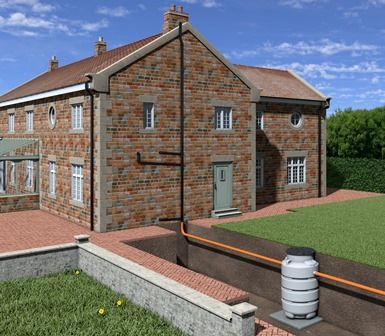
QUANTUM Low cost sewage treatment plant.
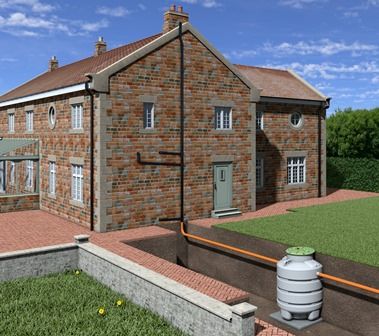
VORTEX Domestic sewage treatment plant.
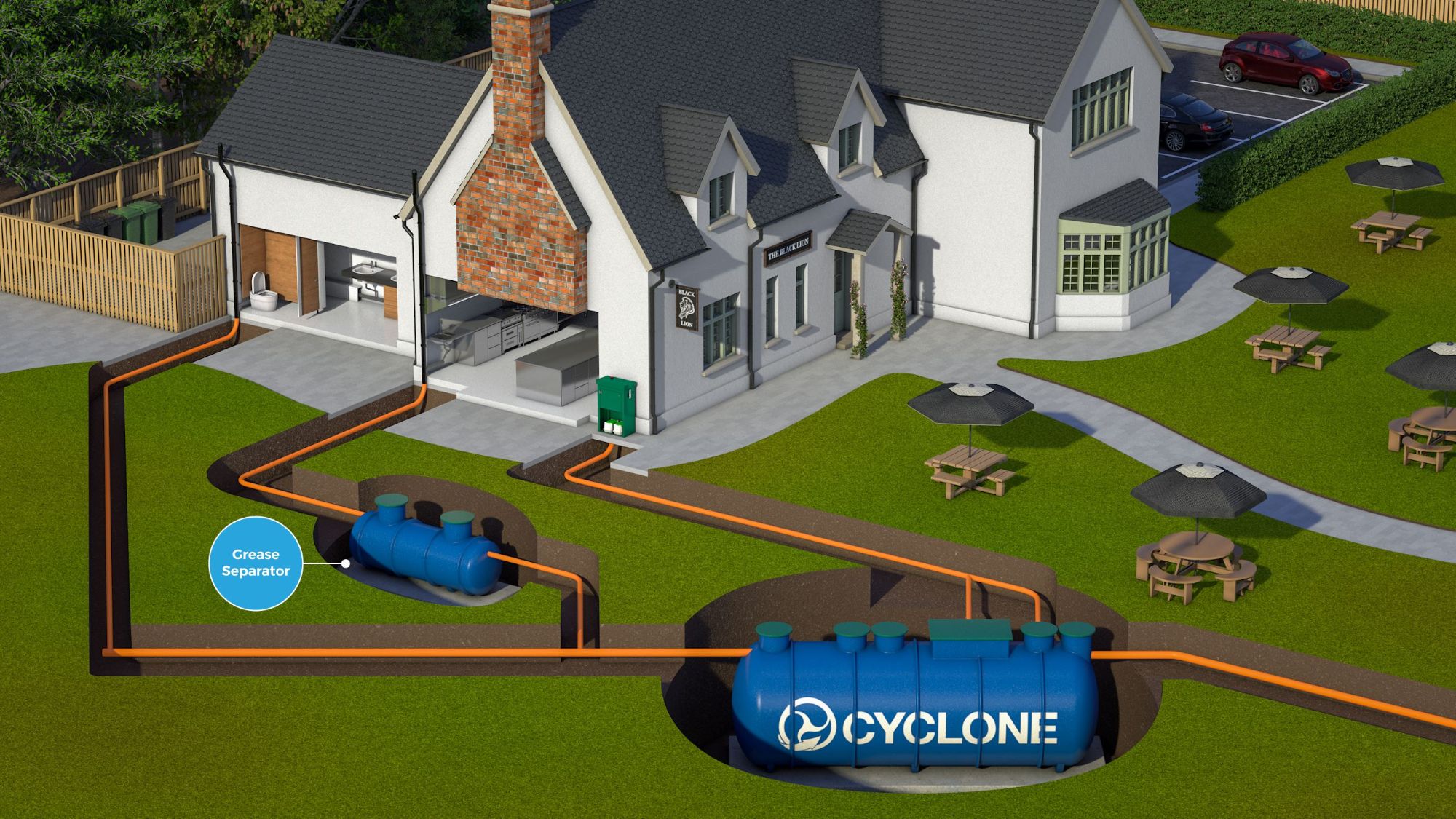
CYCLONE Commercial/Domestic sewage treatment plant.
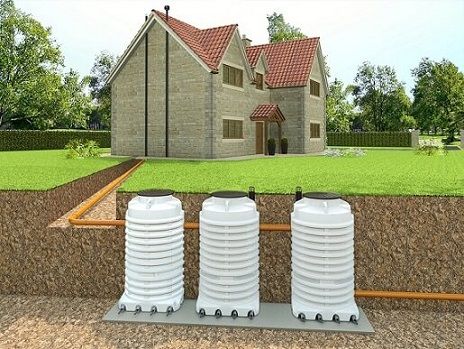
FilterPod Non electric sewage treatment plant.
Sewage Treatment Systems For Domestic Properties
A sewage treatment plant can be one of the most effective methods of managing sewage for off-mains domestic properties. Our sewage treatment plants remove contaminants from the wastewater and sewage that is produced from a household, creating much cleaner effluent that is better for the environment.
Our Sewage Treatment Plant Solutions
WTE manufactures several types of sewage treatment plants for rural off-grid wastewater treatment, with prices starting from £1550 + VAT. Find the sewage treatment system that best suits your needs today.
All of our sewage treatment plant solutions for rural and off-main domestic properties conform to the current UK regulations.
VORTEX
VORTEX low energy and adjustable sewage treatment plant solves the low occupancy problem faced by other systems.
From 1 to 50 persons.
Our most popular domestic system.

QUANTUM
QUANTUM domestic home wastewater treatment plant.
The most compact and affordable system in the UK.
From £1,430 + VAT.
From 1 to 10 persons.

CYCLONE
CYCLONE commercial & domestic home wastewater treatment plant that can work down to 5% of its design load.
From 1 to 6,000 persons.

FilterPod
FilterPod non-electric sewage treatment plant.
It can survive long periods of no use and intermittent use (holiday homes).
From 1 to 20 persons.
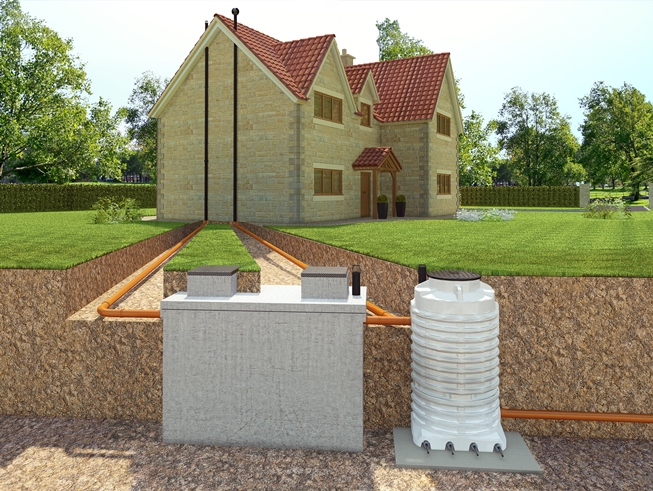
Choosing The Right Sized Sewage Treatment Plant
For a domestic property in the UK, the size of sewage treatment plant required is determined by the number of bedrooms.
You must allow for:
Bedroom 1 = 2 people
Bedroom 2 = 2 people
Additional bedroom = 1 person
For example, a four bedroom house requires a 6 person system (2+2+1+1=6).
If the sewage treatment plant needs to serve multiple properties or is for commercial/non domestic applications, please contact us for help via phone or email.
The Different Types of Sewage Treatment System
Activated Sludge Process (ASP) Sewage Treatment Plants
An ASP sewage treatment plant (VORTEX and QUANTUM) consists of a single tank, with a small electric blower, which is used to aerate the sewage and enable raw sewage to be treated. ASP sewage treatment plants are a suitable option for the vast majority of homes.
Unlike most sewage treatment plants, ASP systems treat both liquid and solid waste.
How ASP Sewage Treatment Plants Work:
ASP sewage treatment plants are a "two stage" process of Aeration & Settlement. There is no primary tank/septic tank stage.
The incoming raw sewage is immediately aerated and broken down by bacteria in the Biozone. The water in the Biozone is aerated for several hours allowing the microorganisms to digest the pollutants and clean the sewage.
The treated water then flows into a Clarifier where clean water and undigested waste (sludge) are separated via gravity. Clean water flows out of the tank and the sludge is recycled for more treatment.
ASP Sewage Treatment Plant Cost:
These types of sewage treatment plants start at £1,430 + VAT.
They are a simple, reliable wastewater treatment solution and tend to be cheaper than three stage plants, with a lower electricity cost. This makes an ASP plant a very affordable option to have installed on your property.
ASP Advantages:
No odour.
Very efficient.
Very compact.
Low energy.
Simple method of operation with very little to go wrong.
Moving Bed Biofilm Reactor (MBBR) Sewage Treatment Plants
These types of domestic/commercial sewage treatment systems comprise of a tank that has three treatment stages: Settlement - Aeration - Settlement.
An MBBR sewage treatment plant is a great option for domestic or commercial properties that produce larger amounts of sewage, such as multiple houses, campsites and pubs.
How MBBR Sewage Treatment Systems Work:
MBBR sewage treatment plants work by having the sewage settle in a Primary Settlement Tank to remove the solids, a Biozone with floating plastic media to provide a huge surface area for bacteria and then a Final Settlement Tank to separate clean water and any residual solid particles.
Our CYCLONE MBBR wastewater treatment plant uses the settled solids in the first Primary Settlement Tank as a source of food for the bacteria in the Biozone. It uses an automatic process to trickle-feed the bacteria - even during holiday periods when no-one is using the sewage system.
Our MBBR sewage treatment plants cope extremely well with fluctuating flow rates and underloading. This is a problem with many residential sites, campsites at the beginning and end of the season and pub trade during weekdays.
While most sewage treatment plants can only work down to 50% of their maximum design loading, CYCLONE can work successfully down to 5% of the design size.
MBBR Sewage Treatment Plant Costs:
The cost of our CYCLONE MBBR sewage treatment systems starts from £1,800 + VAT.
Like all three stage sewage treatment plants, our MBBR tanks are larger than ASP wastewater treatment systems so installation is more expensive.
Once installed, MBBR gives low running costs because of its simple design, low energy use and self cleaning operation (unlike SAF and Disc systems).
MBBR Advantages:
Excellent effluent quality.
Able to handle low and fluctuating loads.
Perfect for large or commercial sites.
Simple method of operation with very little to go wrong.
Non Electric Sewage Treatment Plants
Our FilterPod sewage treatment system uses no electricity for the process and only needs an annual service, making it the most sustainable sewage treatment plants in the UK.
The FilterPod sewage treatment plant is our own unique UK design and uses inert RDX media for the filtration that does not breakdown inside the tank, unlike some of the others of this type.
How Non-Electric FilterPod Sewage Treatment Plants Work:
FilterPod sewage treatment plants are a two tank system - Primary Settlement Tank/Septic Tank & FilterPod non electric filter.
The liquid is split from the solid waste in the Primary Tank, or existing septic tank if one is available, and is then filtered by the media in the FilterPod unit.
Air is naturally vented through FilterPod to supply the RDX media with oxygen.
Aerobic bacteria grow in the media and digest the filtered pollutants, resulting in a much cleaner and environmentally friendly effluent being produced. The effluent quality is superb; often better than from most electric treatment plants, making the FilterPod sewage treatment plant a very appealing option.
FilterPod Sewage Treatment Plant Cost:
Installing a non-electric sewage treatment plant is similar in cost to installing a traditional three stage electric one. However, because they use no power during their filter process, a non-electric sewage treatment system will constantly be saving you money on your monthly electricity bills when compared to electric-based systems.
It is worth noting that the filter media must be partially replaced every year for maximum performance, and to ensure no blockages occur. In addition to this, we recommend that the filter media is fully replaced every 10 years.
Non Electric Sewage Treatment Plant Advantages:
No electricity needed.
Lowest carbon footprint.
Simple operation.
Find the Right Sewage Treatment Plant For You
Get in touch with our team today, where one of our sewage treatment plant experts will be able to discuss your needs, and help you find the best sewage treatment system for your property.
Sewage Treatment Plant FAQs
Do I need a sewage treatment plant or a septic tank?
When it comes to picking a sewage and wastewater solution for a property, the usual choice is between a sewage treatment plant and a septic tank. Whether you need a septic tank or a sewage treatment, will depend on your property’s unique requirements.
A sewage treatment plant will produce clean effluent that can be safely discharged either to ground or into watercourses such as rivers, streams, ditches, or canals because it filters contaminants, making it more environmentally friendly.
You cannot discharge a septic tank into surface waters, as the effluent is too septic and polluting for the environment, and instead must be discharged into the ground via a drainage field system.
Most people will choose a sewage treatment plant for a modern building for threeo reasons:
They can't discharge into the ground.
Sewage treatment plant effluent is less polluting.
It is more sustainable - a septic system will inevitably fail.
Can a sewage treatment plant discharge to a soakaway?
No, in the UK a sewage treatment plant can only discharge to ground via a drainage field. If a sewage treatment plant discharges to a soakaway then this is spot pollution of groundwater and the Environment Agency need to be contacted for permission.
What size sewage treatment plant do I need?
The size of a domestic sewage treatment plant in the UK is determined by the number of bedrooms. For singles houses, use the following:
1 bedroom = 2 people
2 bedrooms = 4 people
3 bedrooms = 5 people
4 bedrooms = 6 people
5 bedrooms = 7 people
6 bedrooms = 8 people
For multiple properties or commercial sites, please contact us on 01759 369 915.
